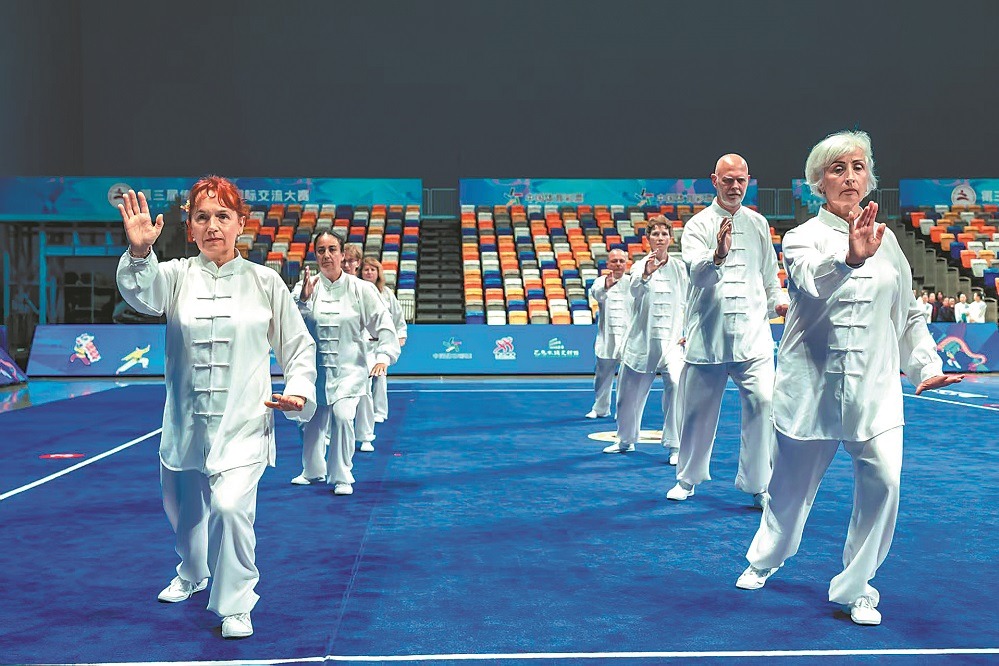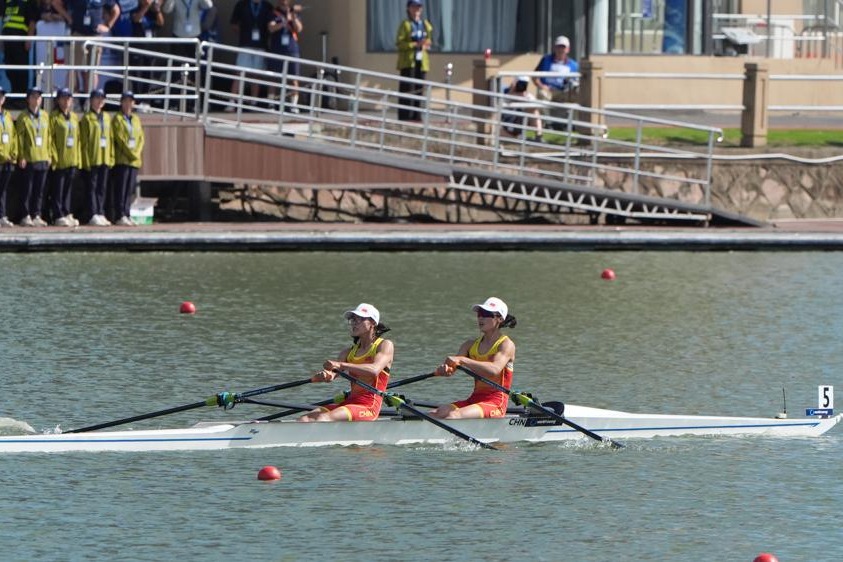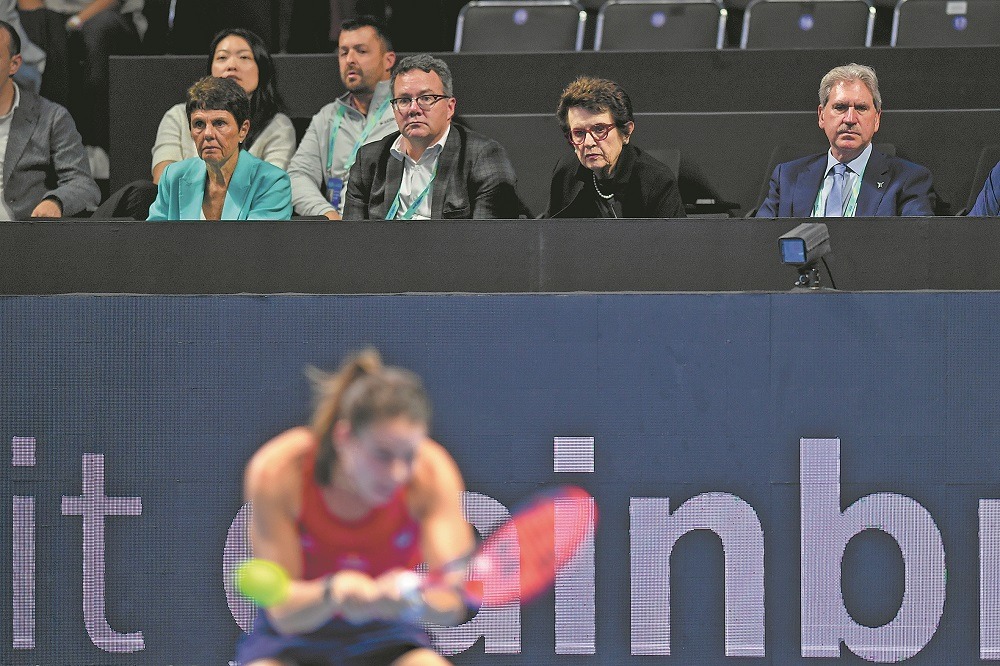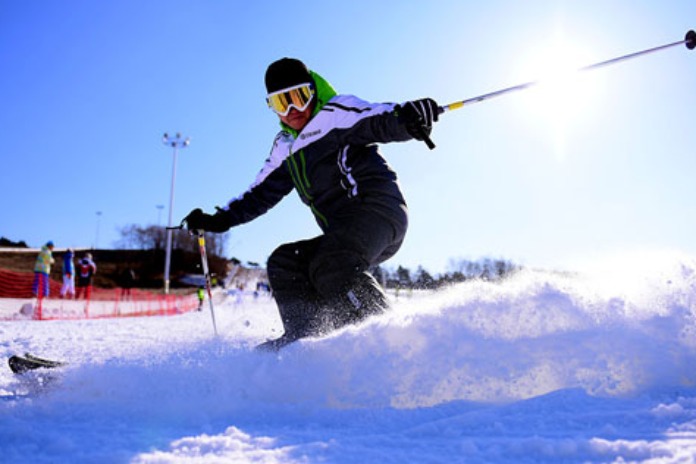Appliance of science giving China an edge

Athletes benefiting from cutting-edge tech in build-up to Beijing Games
China is confident the use of cutting-edge technology can help the nation's athletes deliver their best performances at the 2022 Beijing Winter Olympics.
With just over a year to go until the Games, a national research and development project, partly led by the Beijing Institute of Technology (BIT), is busy testing and implementing training equipment and software that will help Chinese athletes move quicker and stronger on the ice and snow.
Motional intelligence
At an ice rink in Beijing, a team led by associate professor Liu Ming from BIT's School of Optics and Photonics is analyzing the movements of speed skaters and figure skaters using image-acquisition equipment and high-precision cameras.
The project not only focuses on individual performance but can also analyze the movements of multiple athletes at once.
"Our system can record athletes' movements through continuous close-up zoom tracking and panoramic acquisition. Then we analyze the athlete's movement and trajectory, in order to give them better control over their performance, and help athletes and coaches train scientifically," said Liu.
The distinguishing feature of this device is the application of pan-tilt-zoom technology to measure motion. It eliminates the need for wearable devices, and even if the movement covers the whole area of the rink, the device can still accurately obtain the motion data.
The two panoramic cameras have a resolution of 25 megapixels per frame and can capture images at a rate of 160 frames per second-suitable for multi-person motion trajectory analysis.
Liu said his team will improve and upgrade the system, increase the number of acquisition slots and image resolution to make the results even more accurate.
"We hope that our equipment and products can be used in the teaching and training of winter sports and even track-and-field events as soon as possible, to improve the performance of our athletes," he added. "This is our greatest glory!"
3D simulators
At BIT's School of Optics and Photonics, associate professor Zhang Haiyang, in charge of the "3D Perception and Reconstruction Technology of Winter Scenes" project, is presenting a simulated Olympic ski resort constructed by a 3D laser scanning system.
The project scans the Olympic ski resort and surrounding environment in order to generate a 3D model.
The team can provide three-dimensional geometric data of a track for the indoor ski training simulation system, so that the movements of the athlete and the training platform conform to the real-life sliding conditions.
In addition, virtual scenes around the track can be provided to help athletes see the surrounding environment in real time.
"We measure the data of ski jumping, alpine skiing, cross-country skiing and biathlon venues, and then present the site's information using VR technology. With athletes' trajectory data, we apply the presentation of simulated sites to indoor training," says Zhang.
In order to collect enough field data to simulate different environments, the research team visited several resorts in Beijing, as well as Hebei and Jilin provinces, to scan data and conduct tests using drones.
With temperatures plummeting to as low as minus-20 degrees Celsius, special drones capable of operating in such a harsh environment were needed.
The team also developed systems to capture athletes' posture in real time, and track their position, acceleration, speed and other information.
"Our system has already been used by the national team, which can help reduce injuries, improve athletes' training efficiency, and provide technological support for coaches," Zhang said.
All-season skiing
In a laboratory of BIT's School of Automation, Cao Hongqing puts on wearable sensors before stepping onto a simulator on a 12-meter-long steel platform and "skiing "down the "slope", helped along his way by images of the piste on an enormous electronic screen.
Cao's effort marked the launch of the "Indoor Multi-DOF Simulated Ski Training System".
As a member of the system's research team, the 24-year-old graduate took skiing lessons to help him test the functions of the device.
"We do mainly rotational motions on the sliding platform. It's exhausting to train on it, but it can help achieve training goals by mimicking the experience of real trails," Cao says.
The research project mainly provides indoor training devices for alpine and cross-country skiers, in a bid to improve the efficiency of their movement.
In the meantime, setting pattern recognition and posture measurement systems on the ski training platform allows for the acquisition and analysis of athletes' movement data, which can help guide scientific training.
Project chief Liu Xiangdong, who is also a professor at the School of Automation, explains that this set of equipment benefits athletes by allowing indoor ski training in all seasons. "The maximum skiing speed on the platform can reach around 100 km/h," he notes.
Seventeen sensors placed on athletes' joints can also help measure their postures, which coaches can refer to for assessment.
Some of this equipment has also been applied to the national team's training, according to Liu, who adds: "As the Beijing Winter Olympics is coming, I hope our research conclusions can contribute to athletes' training and help them to improve their performance at the Olympics and win honor for China."
Xinhua
Most Popular
- Andrew Parsons re-elected IPC president
- IPC lifts Russia, Belarus partial suspensions
- Black Ferns legend set for World Cup swan song
- Zola and Griffey Jr add even more star power to Ryder Cup
- A traditional approach to sports culture
- World Rowing officials hail Shanghai championships






























